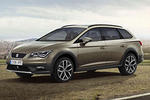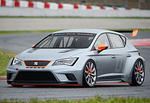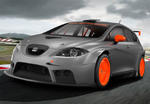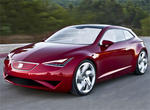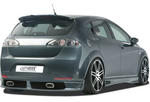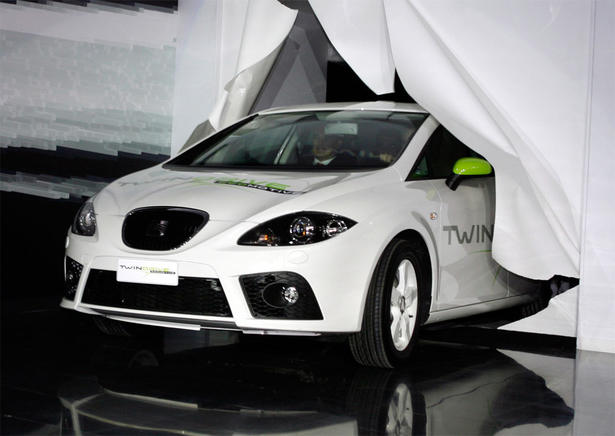
SEAT's first electric car project, the SEAT Leon Twin Drive, has been presented today in front of the Spanish government. The SEAT Leon Twin Drive is based on the Leon and is powered by an electric motor. The SEAT Leon Twin Drive features modified gearbox, power braking, heating and cooling systems. The electric motor is powered by lithium-ion batteries located at the rear of the vehicle. The SEAT Leon Twin Drive outputs 35 kW, has a top speed of 100 km/h and a range of 50 km.
The SEAT Leon Twin Drive is the beginning of a project that stretches until 2014 with the goal of researching 'plug-in' hybrid propulsion. The Spanish company aims to put the first SEAT Leon Twin Drive on the market the same year.
Seat Press Release:
Today SEAT presented an electrically-driven vehicle prototype on which the Spanish brand is currently working to Miguel Sebastian, Spanish minister for Industry, Tourism and Business. The SEAT project is an electrically-powered Leon Twin Drive Ecomotive vehicle equipped with a lithium-ion battery for urban circuits, connected ingeniously to an internal combustion engine for interurban trips, with optimum consumption level.
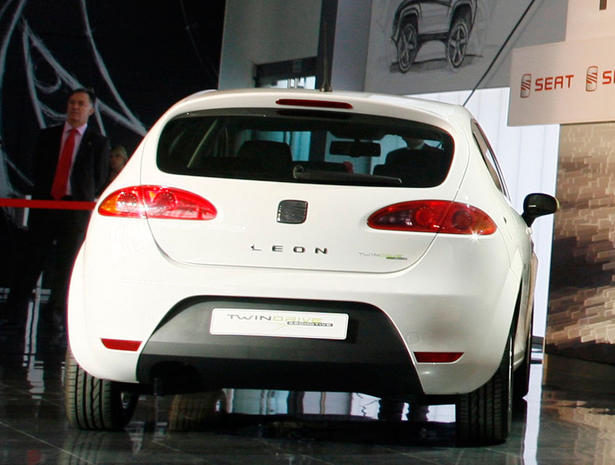
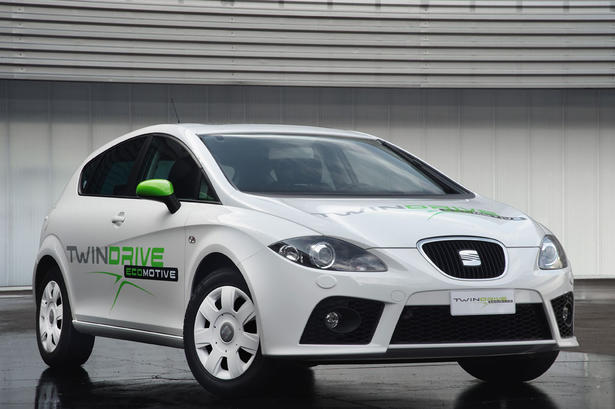
The presentation was made at the SEAT Technical Centre, and was also attended by Antoni Soy, the Catalan government (Generalitat)’s Secretary for Industry and Business as well as the mayors of the municipalities where SEAT’s facilities are located.
Representing SEAT were Francisco Garcia Sanz, member of Volkswagen’s Executive committee and Chairman of SEAT’s Board of Directors, and Erich Schmitt, Chairman of SEAT.
Garcia Sanz highlighted the importance of this vehicle from the point of view of investment
made, not only in environmental terms, but also in the future of the company. “Whereas half-way through the last century we made a decisive contribution to putting a whole generations on wheels, today, 50 years on, we also want to be leading players at the beginning of a process of development and industrialization of this type of car which combines an electric power unit with an internal combustion engine”.
None the less, he also underlined the need to involve all stakeholders in order to guarantee
sustainable driving in the future: “Product technology by itself is no guarantee for success. The implication of electricity utility companies as well as the clear support from governments is crucial in order to assure mobility and autonomy for the users”.
The plan, with a time-scale stretching to 2014, is designed to carry out research, within the field of ‘plug-in’ hybrid propulsion, into the gradual phasing-out of the use of the internal combustion engine so as to launch onto the market SEAT models with very low consumption and environmentally-friendly CO2 emission levels.
Later on, the different representatives were provided with a description of the technical
aspects of the SEAT Leon Twin Drive Ecomotive project; the Spanish government’s Minister for industry was taken for a test drive in the vehicle.
TECHNICHAL INFORMATION
SEAT Leon Twin Drive Ecomotive project, the first step
The Spanish brand’s first electrically-driven car prototype is based on a Leon in which the traditional combustion engine has been replaced by an electric one. Likewise, certain elements such as the gearbox, power braking, heating and cooling systems, and a substantial part of the electronics have also been modified. The engine is fed by a group of lithium-ion batteries located at the rear of the vehicle, providing sustainable power of 35 kW and a self-imposed top speed of 100 kph.
This prototype will allow the Spanish brand’s engineers to carry out research into the specific features of electrical propulsion and above all how to improve on one of its main drawbacks – quick battery recharging and range, which, in the case of the current vehicle, is 50 kms.
The Twin Drive Ecomotive project is a first step towards a 100% electric car, and consists of the development of a hybrid vehicle combining the well-tested efficiency of SEAT’s Ecomotive cars with the advantages offered by electrical propulsion.
Thus, a drastic reduction of CO2 emissions will be achieved, combined with noteworthy performance and range. With its Ecomotive range, SEAT already offers its clients the Ibiza Ecomotive with emissions of 98g/km of CO2, the Leon Ecomotive (119 g/km), and the Alhambra Ecomotive (159 g/km). For the record, two of the models, the Ibiza and the Alhambra, are the vehicles have the lowest emission levels for their respective segments.





